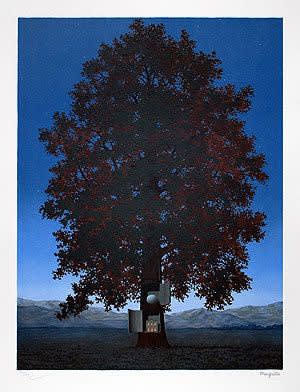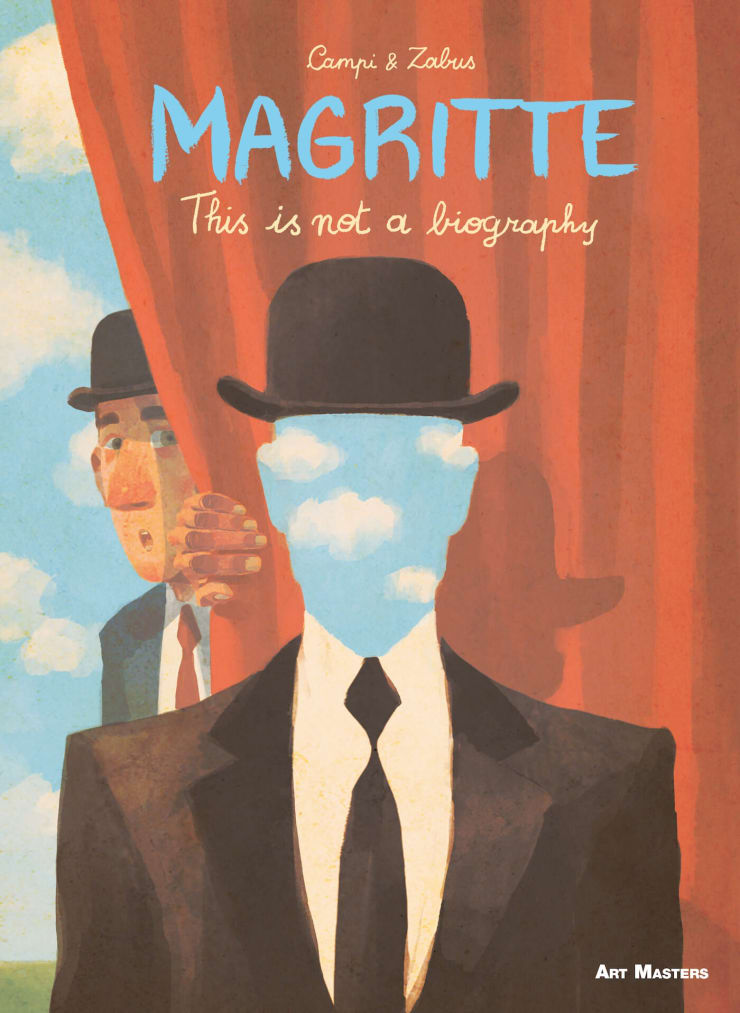Rene Magritte died in 1967, at age 68, and left an unfinished painting sitting on his easel. The fascination with his work, and with the artist himself, has never waned.
The Missing Piece of the Painting
Rene Magritte recycled. It was not an uncommon practice for him, and other artists, to save money by reusing canvasses and cutting them into pieces to fit a new work. Teams of researchers from the Royal Museums of Fine Arts of Belgium and the European Centre of Archaeometry of the University of Liege, who have been studying Magritte’s works, found the last section of a painting that he did in 1927. La Pose enchantée (The Enchanted Pose) was exhibited in 1927.
Three sections were found by researchers in other museums, hidden under other paintings, but the fourth, and final, piece was not found until late last year, hidden under a painting called God is not a Saint, created in 1935.
Researchers at MoMA in New York, Moderna Museet in Stockholm and the Norwich Castle Museum in the UK had each found a piece of La Pose enchantée, but this find by Royal Museum completes the puzzle…except for the reason why Magritte cut it up such an interesting work in the first place.
This is Not a Biography of Magritte
Rene Magritte not only explored visual anomalies in his work, he also played with words. Magritte’s playfulness was the inspiration for Magritte: This is Not a Biography, a graphic novel by Vincent Zabus and Thomas Campi and published by SelfMadeHero. The book tells the story of a man named Charles Singulier, who buys a bowler hat, like the one seen in many of Magritte’s paintings, and meets characters from Magritte’s paintings who come to life and tell him that he’ll have to wear the bowler forever unless he uncovers some of the secrets of Magritte’s life. Charles moves in and out of Magritte’s paintings, telling the artist’s story in a whimsical biography.
Rene Magritte’s Way With Words
Surrealist writing, like Surrealist art, was used to express spontaneous thoughts, without worrying about logic or reality. Also called Automatic Writing, it was based on the theories of Sigmund Freud, and was meant to release the ideas and imagination of the subconscious mind.
Magritte wrote often, both prose and poems, and much of his writing has been published in Rene Magritte, Selected Writings. The writings as far back as the 1920s, and are as mysterious, visual and dreamlike as his paintings:
She goes into the woods. It is bathed in twilight. Trunks and branches gleam, vague and silvery.
She goes forward slowly as if she is weary. Soon she hesitates, stops, lies down on a bed of fallen leaves.
A shout is heard in the distance, a woman’s name.
With eyes wide open she stares at a broken branch hanging on by a few threads to a huge tree.
One of her hands has closed round the object she dropped when she lay down. Through her light dress you can make out her woman’s body. Her pale face expresses extreme weariness.
Rene Magritte, Selected Writings is edited by Kathleen Rooney and Eric Plattner and translated by Jo Levy, is published by University of Minnesota Press.
Rene Magritte Lithographs at VFA
Please contact us if you would like more information about the works of Rene Magritte available at VFA.
Barry Schwabsky. A Painter Speaks, so that His Paintings Can Remain Silent. Hyper allergic. April 23, 2017.
Daly Alberge. Magritte’s missing nudes found hidden under paintings after 80 years. The Guardian. October 3, 2013.
https://selfmadehero.com/news/magritte-this-is-not-a-biography
https://www.upress.umn.edu/book-division/books/rene-magritte







